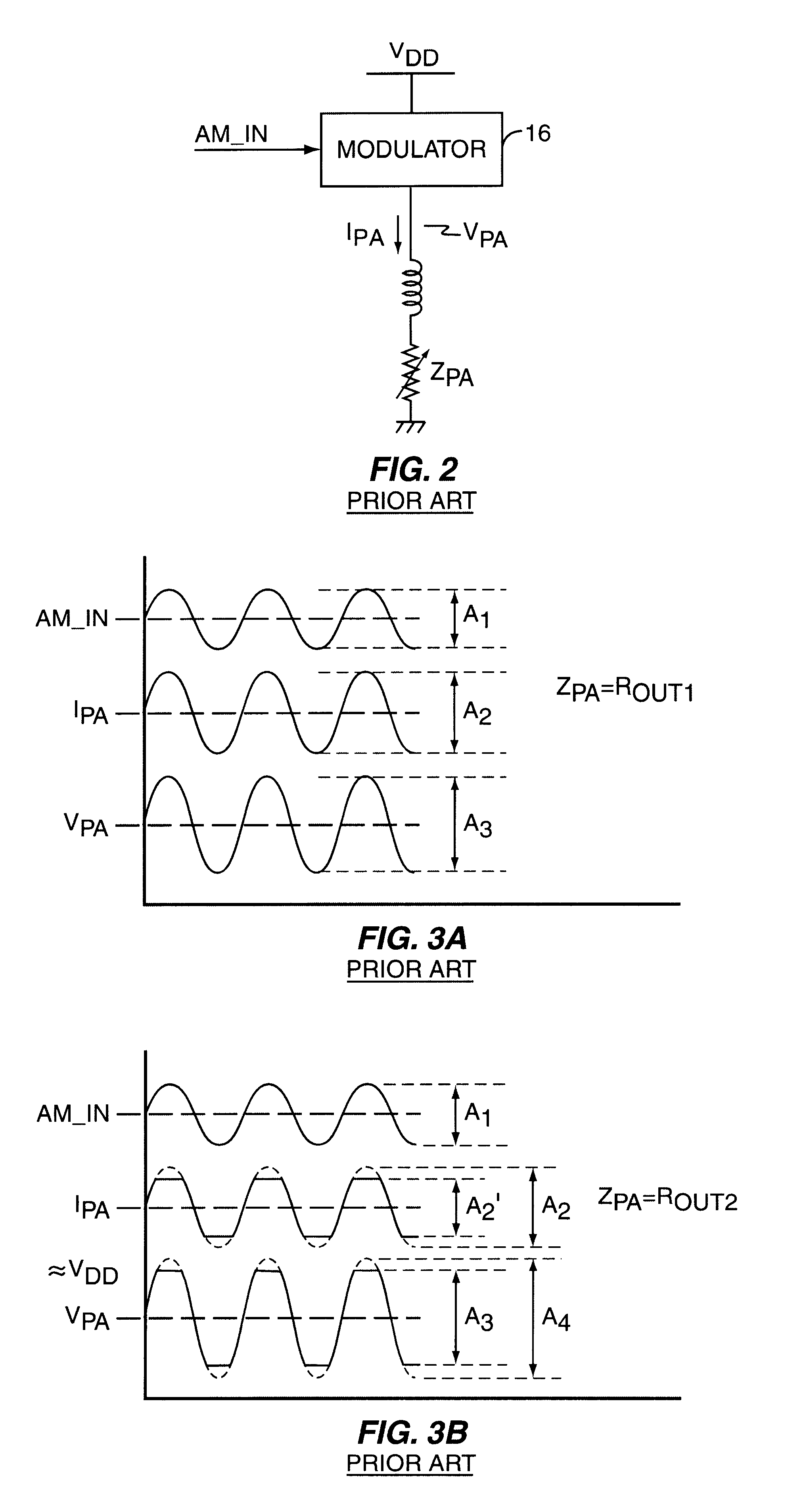Current modulator with dynamic amplifier impedance compensation
- Summary
- Abstract
- Description
- Claims
- Application Information
AI Technical Summary
Benefits of technology
Problems solved by technology
Method used
Image
Examples
Embodiment Construction
FIG. 1 illustrates a wireless communication device 10 employing a conventional current modulator. The device 10 comprises a transceiver 12, a digital signal processor (DSP) 14, a current modulator 22, and an antenna assembly 24. In operation, the transceiver 12 provides a constant envelope, phase modulated input signal to the power amplifier 18 based on desired transmit data received from the DSP 14. Additionally, the DSP 14 generates an amplitude modulation signal that drives modulator 16. In turn, modulator 16 generates a modulated supply current I.sub.PA, which serves as the input supply current to the power amplifier 18. The power amplifier 18 is operated in saturated mode such that the modulated supply current driven into the power amplifier output impedance generates amplitude modulations in the RF output signal from the power amplifier 18. Consequently, the RF output signal includes both phase and amplitude modulation information corresponding to the desired transmit data.
FIG...
PUM
 Login to View More
Login to View More Abstract
Description
Claims
Application Information
 Login to View More
Login to View More - R&D
- Intellectual Property
- Life Sciences
- Materials
- Tech Scout
- Unparalleled Data Quality
- Higher Quality Content
- 60% Fewer Hallucinations
Browse by: Latest US Patents, China's latest patents, Technical Efficacy Thesaurus, Application Domain, Technology Topic, Popular Technical Reports.
© 2025 PatSnap. All rights reserved.Legal|Privacy policy|Modern Slavery Act Transparency Statement|Sitemap|About US| Contact US: help@patsnap.com



